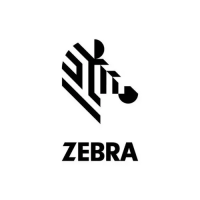
Do you have a question about the Zebra KR203 and is the answer not in the manual?
| Print Resolution | 203 dpi |
|---|---|
| Print Technology | Direct Thermal |
| Humidity | 10% to 90% non-condensing |
| Connectivity | USB, Serial |
| Operating System Compatibility | Windows, Linux |
| Media Sensors | Reflective |
| Memory | 8 MB Flash |
| Maximum Print Length | 39 in./991 mm |
| Power Requirements | 100-240 VAC, 50/60 Hz |
| Operating Temperature | 5°C to 40°C |
| Storage Temperature | -40°C to 60°C |
Identifies the target audience for the hardware integrator guide.
Explains the structure and content arrangement of the manual.
Provides contact information for technical support and other departments.
Explains symbols and formatting used throughout the document.
Introduces the KR203 printer and highlights its key features.
Lists package contents and provides instructions for unpacking and inspection.
Discusses essential design elements for integrating the printer into a kiosk.
Outlines the basic physical dimensions for installing the printer in a kiosk.
Illustrates the front, rear, left, and right views of the printer.
Identifies and labels the main physical components of the printer.
Details technical specifications like print method, resolution, and speed.
Describes the various media types supported by the printer.
Explains the procedures and methods for mounting the printer.
Details the sequence of operations during the printing process.
Describes the printer's buttons, indicators, and sensors.
Provides instructions on how to perform a manual reset of the printer.
Offers guidance on proper cable management for kiosk integration.
Details power requirements and the approved power supply for the printer.
Explains the importance of proper grounding for electrostatic discharge protection.
Covers interface cable requirements for connecting the printer to a host.
Details USB 2.0 compliance and wiring for printer connection.
Provides guidance on designing systems for dispensing media to the printer.
Lists requirements for dispensing media from rolls or fan-fold stacks.
Identifies the media guide as a required accessory and lists available widths.
Details how to perform a scratch test to identify media types.
Details the automated and manual media loading sequences.
Explains how to clear paper jams from the printhead and presenter.
Introduces the range of accessories available for the KR203 printer.
Describes a bezel that prevents card insertion into the media exit.
Explains quick-fit hubs for mounting the printer to sheet metal.
Details a holder for mounting the printer to a kiosk wall.
Describes a bracket for supporting media rolls and sensors.
Explains an optical sensor that alerts when media is low on the roll.
Describes an adapter for guiding small core media rolls.
Details a mounting plate for roll holders and protecting cables/media.
Describes a versatile holder supporting multiple roll positions and widths.
Details the specifications and features of the 70-watt power supply accessory.
Introduces the USB cable accessory for connecting the printer.
Describes an adapter to prevent excessive pulling force with large media rolls.
Explains the meaning of different status light patterns and LED error codes.
Describes how to use the feed button for interface functions and calibration.
Discusses common problems related to no print and poor print quality.
Covers issues with media detection, calibration, and loading errors.
Addresses problems with cutting, printer lights, and software versions.
Explains how to reset the printer to its factory default settings.